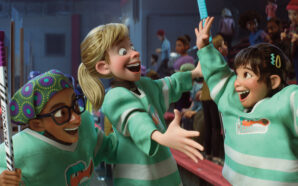Arturo Hilario
El Observador
Jon Peterson first began his journey into the performance arts when he was just seven years old. Since his beginnings with the Royal Ballet School in London he’s starred in performances ranging from “Singing in the Rain” to “The Rocky Horror Show”. His most recent project has him taking on the legendary “Emcee” character in the Tony Award-winning production “Cabaret”, which comes to Broadway San Jose from June 6-11. In the following Q&A we discuss what it’s like being in the play, and how it connects history and now.
Hello Jon, would you give us a hint on how you ended up getting into theater arts?
I always wanted to do it. I used to watch those old MGM musicals when I was a kid, on Sunday afternoons when I was about five and I just fell in love with them. I wanted to be Gene Kelly. Then I started taking dancing classes then subsequently acting classes and then I sort of ended up doing it. I went to the Royal Ballet School in London for a long time because they thought I was good enough to be a ballet dancer but I didn’t want to be a ballet dancer. I was there for 8 years then I stopped doing ballets and went into musicals, I was 17.
What is your background with “Cabaret” before you became part of it? How did you get about to working on it?
I saw the movie when I was a teenager, I was about 15. It was just, it just bowled me over. it was amazing the impact of the story, I had no idea that the story of ‘Cabaret’ was so dark, and true! And Joel Grey as the emcee was something like a creature from outer space, it totally inspired me so I always wanted to play the role. I auditioned for a production in the UK in the mid nineties, they sort of laughed me out of the audition room. ‘Ah, no, you’re so wrong for this.’ Five years later I understudied for the last revival, then I took over the role after nine months and I played it for two years. I did it in New York as well, for the last Broadway revival. [I’ve] Been playing it for over the last 15 years. This is my seventh production. It’s wonderful.
In your own opinion, what is the core of the story of “Cabaret”?
It’s basically about a young guy called Cliff, who’s an American young writer who goes to Berlin to find a story, find inspiration to write a book and this is 1930. And when he goes to Berlin he just gets sucked into this world of hedonism, [at] this backstreet club called the Kit Kat Klub. he makes friends with a girl called Sally Bowles who is a singer in the nightclub. They fall in love, they shack up together, he’s trying to find himself, he’s kind of not sure of his sexuality so he’s experimenting. And it’s their story, but it’s also the story of the elderly owner of the boarding house in which they live, Fräulein Schneider and her romance with the local fruit shop owner, Herr Schultz who’s Jewish, and all the consequences of that at that time. All through this play there’s the creeping onset of fascism raising its ugly head, in 1933 when Hitler came to power, so it’s all leading up to that.
“Cabaret” originally released in 1966. How much has the production changed?
Pretty much exactly the same, they may have pulled back a little, just because when you throw it out there and you see how it lands, and I think they’ve had a chance to go, ‘oh, let’s tweak that, put this here and take this line and put it here.’ very subtle changes. But compared to the original production, it’s very different. Back in the sixties we were a little closer to World War II so people [were] coming to the show that had been in concentration camps, been witness to the whole of World War II. I have a friend and she was on the original production on Broadway, and she said that someone stood up in the audience during the original production and shouted, ‘they killed my father!’, so it hit close to him. So they had to be a little bit more poetic about it back then. Also the morals at the time, we were a little more buttoned up in those days so we couldn’t really go for the the truth of the stories, the backstreet, tawdry Berlin nightclub where anything goes. In this production we can show that anything goes. In the 1966 production is a lot more ‘referred to’ than displayed, not that this one is graphic, it’s just a modern interpretation of the show.
Finally, why should people go out and experience “Cabaret”?
It’s a rollercoaster ride. It’s real, raw theater. If you want to go and see a play with music that displays the craft of the theater, how it can affect you and change the way you think, you should maybe go see it I think. It’s a quite a remarkable experience. You’ll laugh, you’ll cry, you’ll be shocked, appalled. It will take you through every emotion, it’s quite a remarkable piece. It’s sort of relevant to today, with the shift to the right that we’ve taken, politically. It’s a real model lesson in, ‘don’t judge people, don’t prosecute minorities because you’re no better them, and if you do this is the consequence.’ That’s why you need to come see show. It’s a very important thing to see.
More information and tickets can be found at broadwaysanjose.com/cabaret/ and ticketmaster.com. Jon Peterson has a personal website, jonpeterson.biz.






